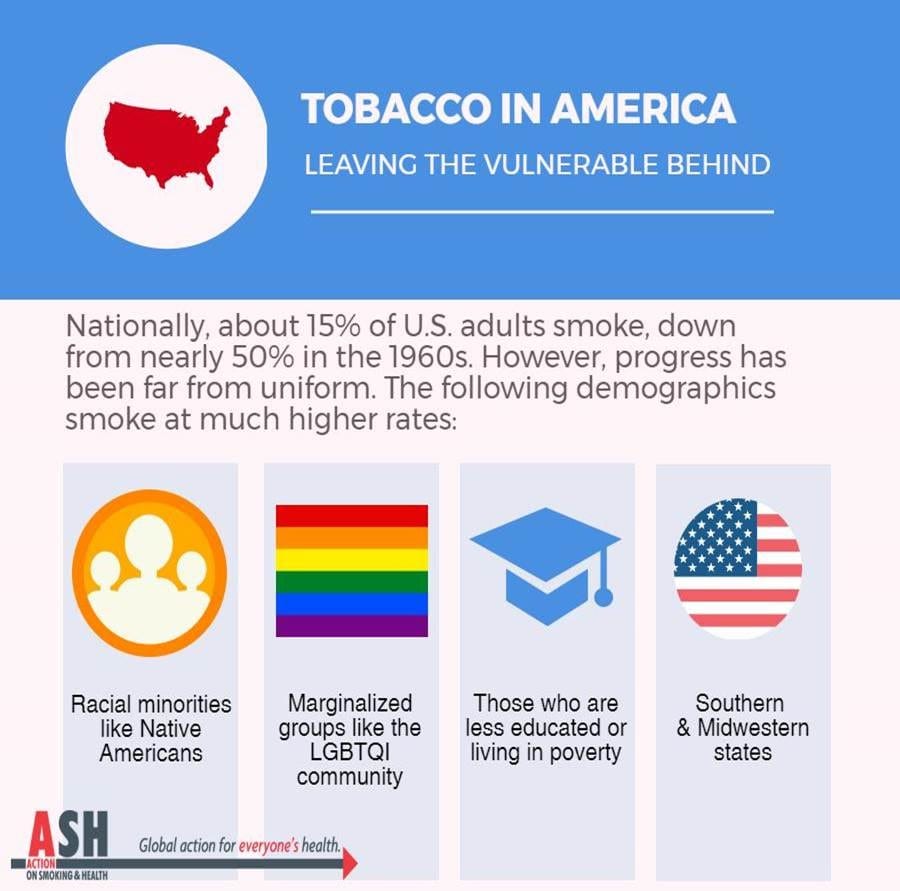All countries around the world, including the United States, have committed to the 2030 Agenda for Sustainable Development: the Sustainable Development Goals (SDGs), which aim to strengthen universal peace and eradicate poverty. 
The harms that tobacco products cause to society are well known. Tobacco is the leading cause of preventable death, killing more than 7 million people per year and costing over 1.4 trillion U.S. dollars to the global economy.
The tobacco problem is so big and costly that it is no surprise governments have taken “global” steps to reduce the harm tobacco causes. Some of these steps include the 2005 entry into force of a tobacco treaty, the WHO Framework Convention on Tobacco Control, and the inclusion of a tobacco specific target in the Sustainable Development Goals that were universally adopted in 2015.
Now that the global community has formally recognized that tobacco is a barrier to prosperity and human development, it is imperative that local governments do all they can to prevent the unnecessary deaths caused by tobacco. Countries around the world have taken action by implementing measures that will help prevent tobacco use, such as smoke-free policies, increasing taxes on tobacco products, and banning tobacco advertising.
Much of the tobacco prevention work is done at the local level, and countries are making progress towards their smoking reduction goals. This year, forty-four countries have submitted reports to the United Nations in order to share progress and challenges encountered at the country level towards achieving health goals in the SDGs, including steps they have taken to decrease smoking. While the U.S. was among the countries that adopted the Sustainable Development Goals, it was not among the countries that submitted a report this year. However, Action on Smoking and Health (ASH), has released a report in its place on US progress towards these various global mechanisms: Tobacco in America, Leaving the Vulnerable Behind, and the conclusion is grim: “specific communities like the poor and less educated bear a disproportionate share of the costs of tobacco.”
Unfortunately, some demographic groups in the U.S. continue to smoke at much higher rates including racial minorities like Native Americans, marginalized groups like the LGBTQI community, those who are less educated or living in poverty and those living in Southern and Midwestern states.”

ASH’s report is consistent with the conclusions of a recent report from the Centers for Disease Control and Prevention, which states that “nationally, the prevalence of cigarette smoking among adults living in rural counties is higher than in urban counties, and smoking rates differ markedly by region, making tobacco use a likely leading cause of differential mortality between urban and rural areas.”
So maybe it is not surprising that the U.S. government did not submit a report on SDG health progress in July, as it is clear that much remains to be done to protect the health of all Americans from tobacco.
States, counties, and cities across the U.S. must show leadership by implementing the measures that will help protect millions of Americans from being harmed by tobacco and reach the aims of the Sustainable Development Goals: to end all forms of poverty, fight inequalities and tackle climate change, while ensuring that no one is left behind. Tobacco is one challenge to development that the U.S. should be able to tackle. No American should be left behind when it comes to being protected from tobacco.